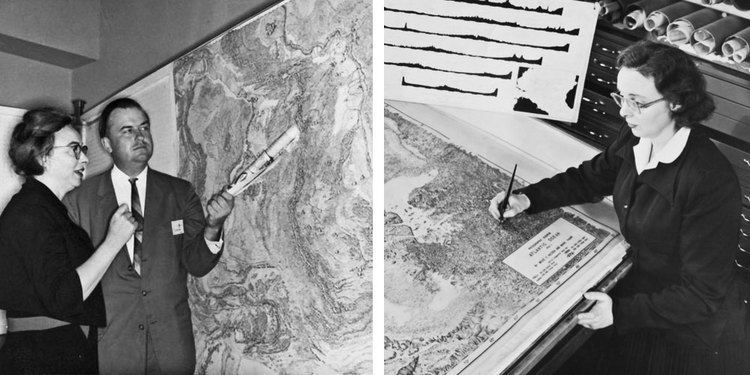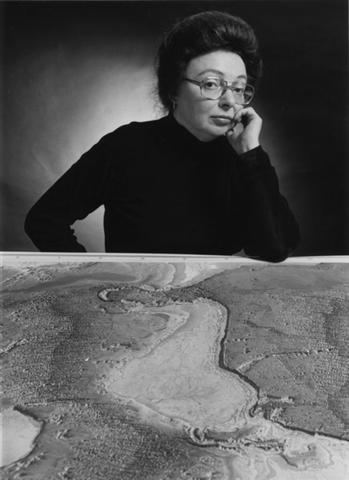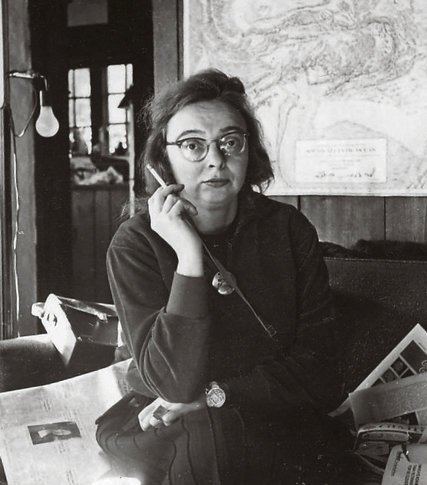Role Geologist Nationality United States | Known for Seafloor topography Name Marie Tharp | |
 | ||
Born July 30, 1920Ypsilanti, Michigan ( 1920-07-30 ) Institutions Lamont-Doherty Earth Observatory Alma mater Ohio UniversityUniversity of MichiganUniversity of Tulsa Education | ||
Residence United States of America | ||
Dr nicky howe marie tharp mapping the deep
Marie Tharp (July 30, 1920 – August 23, 2006) was an American geologist and oceanographic cartographer who, in partnership with Bruce Heezen, created the first scientific map of the entire ocean floor. Tharp's work revealed the presence of the Mid-Atlantic Ridge, causing a paradigm shift in earth science that led to acceptance of the theories of plate tectonics and continental drift.
Contents
- Dr nicky howe marie tharp mapping the deep
- How One Brilliant Woman Mapped the Secrets of the Ocean Floor Short Film Showcase
- Early life
- Career
- Posthumous recognition
- Marie Tharp Fellowship
- Journal Articles
- References

How One Brilliant Woman Mapped the Secrets of the Ocean Floor | Short Film Showcase
Early life

Tharp was born in Ypsilanti, Michigan. Her mother, Bertha, was an instructor in German and Latin; her father, William, made soil classification maps for the U.S. Department of Agriculture.

Tharp graduated from Ohio University in 1943 with bachelor's degrees in English and music and four minors. She later received a master's degree in geology from the University of Michigan before earning a degree in mathematics from the University of Tulsa while working as a geologist for the Stanolind Oil company.
Career

Moving to New York in 1948, Tharp was employed by Maurice Ewing at the Lamont Geological Laboratory (now the Lamont-Doherty Earth Observatory) at Columbia University, initially as a general drafter. There Tharp met Heezen and in early work together used photographic data to locate downed aircraft from World War II. Later, they began working together to map the topography of the ocean floor. For the first 18 years of their collaboration, Heezen collected data aboard the Observatory's ship, the Vema, and Tharp drew maps from that data since women at that time still were excluded from working aboard ship. Restricted from conducting research at sea early in her career due to her gender, she later was able to join a 1965 data-collection expedition. Tharp independently used data collected from the Woods Hole Oceanographic Institution's research ship Atlantis, and seismographic data from undersea earthquakes. Her work with Heezen represented the first systematic attempt to map the entire ocean floor.
Tharp and Heezen published their first physiographic map of the North Atlantic in 1957. Collaborating with the Austrian landscape painter Heinrich Berann, they published their map of the entire ocean floor in 1977 (coincidentally, also the year of Heezen's death). For a time Heezen favored the expanding Earth hypothesis, initially ridiculing her theory as "girl talk", and her name does not appear on any of the major papers on plate tectonics that he and others published between 1959 and 1963. But under Tharp's direction Heezen eventually turned to the alternative theories of plate tectonics and continental drift.
Tharp continued to serve on the faculty of Columbia University until 1983, after which she operated a map-distribution business in South Nyack, New York during her retirement. Tharp donated her map collection and notes to the Map and Geography Division of the Library of Congress in 1995. In 2001, Tharp was awarded the first annual Lamont-Doherty Heritage Award at her home institution for her life's work as a pioneer of oceanography.
Tharp died of cancer in Nyack, New York on August 23, 2006.
Posthumous recognition
In 2009, Ocean in Google Earth included the Marie Tharp Historical Map layer, to allow people to view Tharp's map using the Google Earth interface.
In 2013, author Hali Felt published a biography of Marie Tharp entitled "Soundings: The Story of the Remarkable Woman Who Mapped the Ocean Floor". It was cited by the New York Times for its standing as an "eloquent testament both to Tharp’s importance and to Felt’s powers of imagination."
Marie Tharp Fellowship
The Marie Tharp Fellowship is a competitive academic visiting fellowship awarded to women to work with researchers at Columbia University's Earth Institute.
